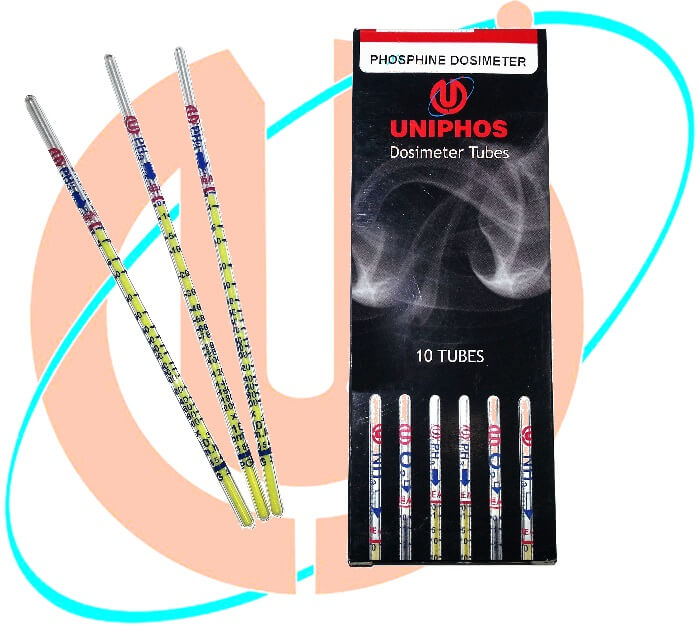
Phosphine dosimeter tubes measure the total dose of phosphine during the entire period of fumigation of goods. Also known as long term detector tubes, with no need for sample draw pump, this a cost-effective method for measuring the phosphine concentration.
Phosphine is widely used as fumigants for disinfection of agricultural commodities such as cereal grains, spices, cotton or any other stored products. Fumigation is carried out by placing a calculated amount of phosphine in the fumigation enclosure. The phosphine concentration starts to build up from zero and attains a maximum and as the PH3 generation stops, the absorption of phospine in the grain gradually brings down the phosphine concentration.
For an accurate fumigation, a certain PH3 concentration profile should be maintained during the entire fumigation period. The insect mortality is governed by “fumigation dose” – which is defined as the concentration-time product expressed in ppm/hr. In order to determine the accuracy of fumigation, it is necessary to measure the total PH3 dose received by the commodity.
Our Uniphos dosimeter tubes present a unique method to determine the PH3 concentration-time product (dose). The total dose is measured by exposing the dosimeter tube during the entire period of fumigation. This is an ideal method as it saves time and money by measuring the total dose received by the commodity during the entire course of fumigation with a single measurement. The length of the stain produced on the dosimeter is calibrated to read directly the phosphine dose received. It ranges from (1-20) X 103 ppm hrs and (1-200) X 103 ppm hrs.
For further information, please e-mail us.